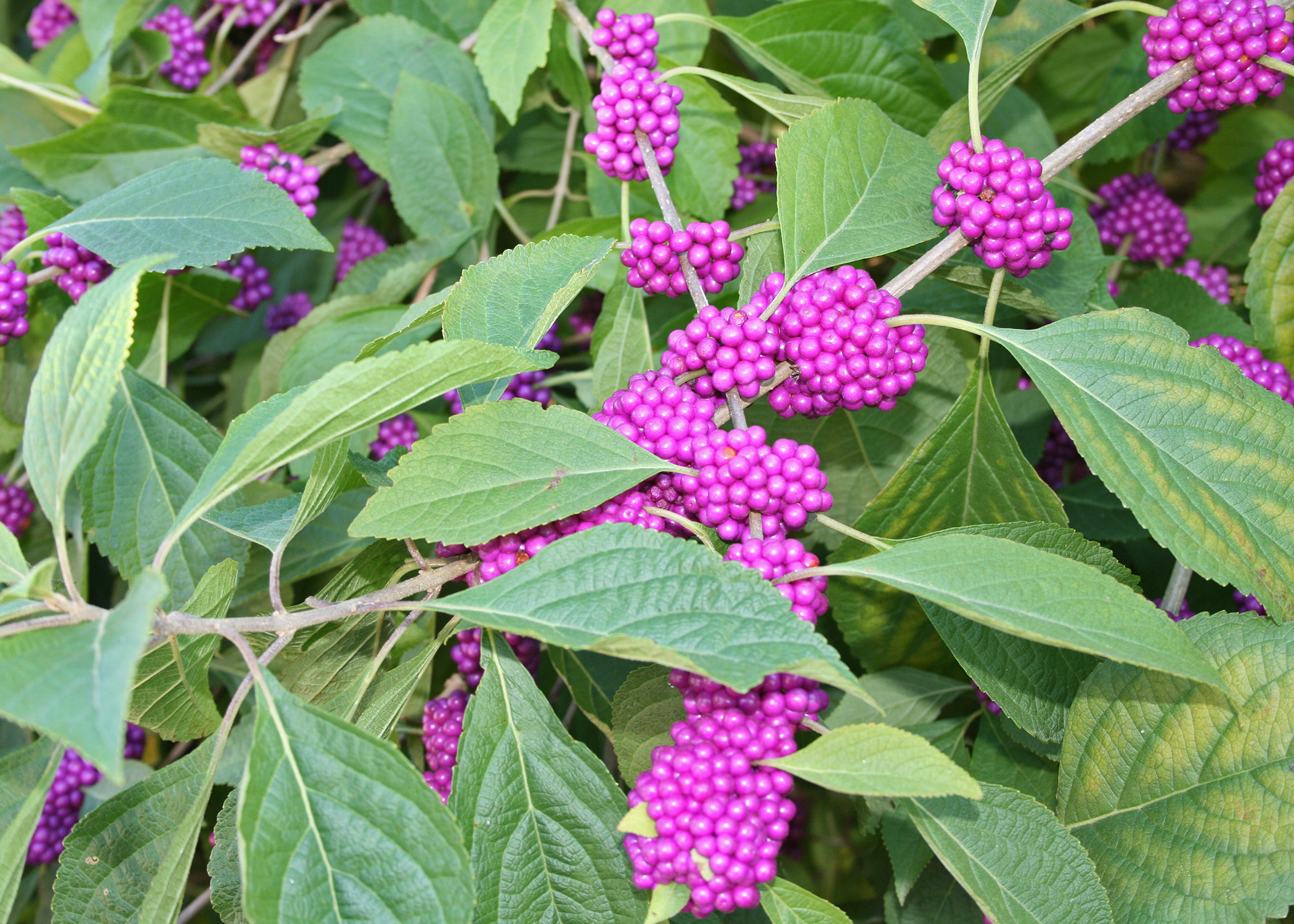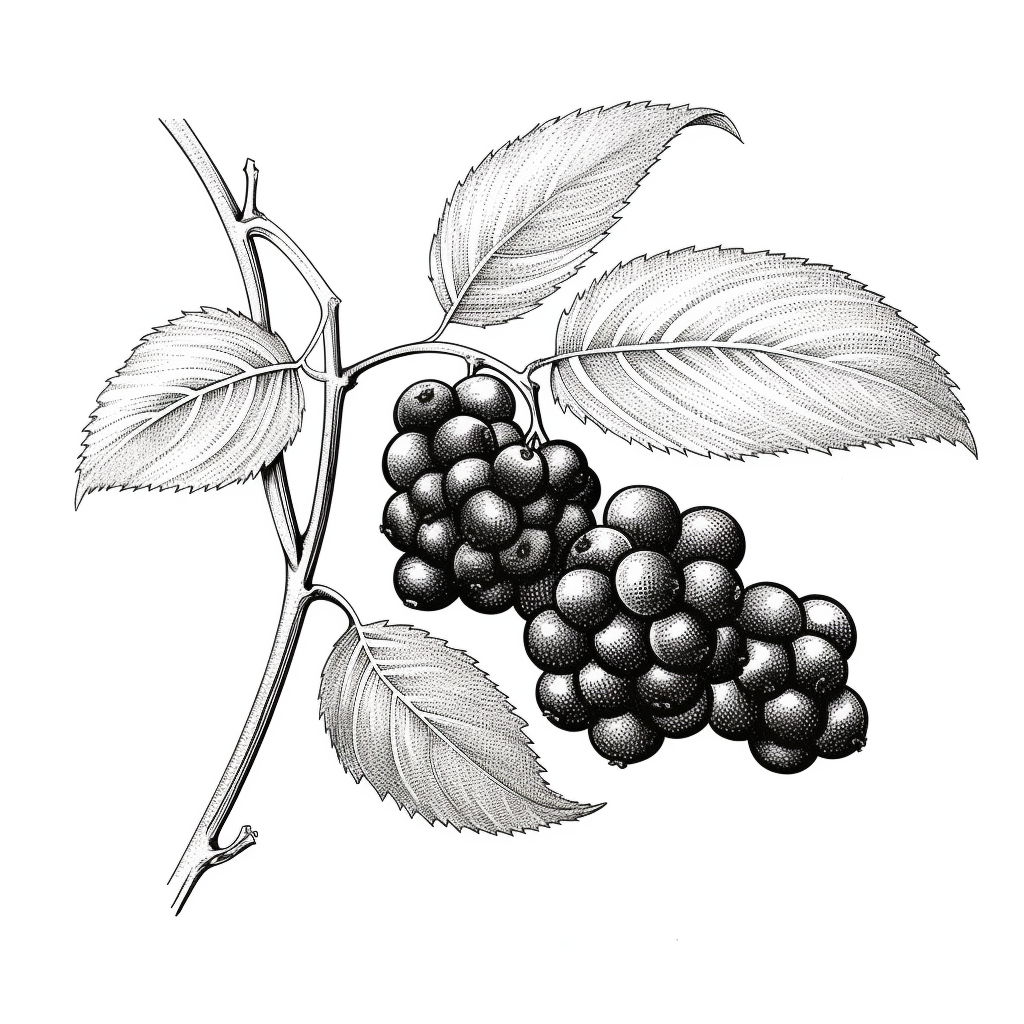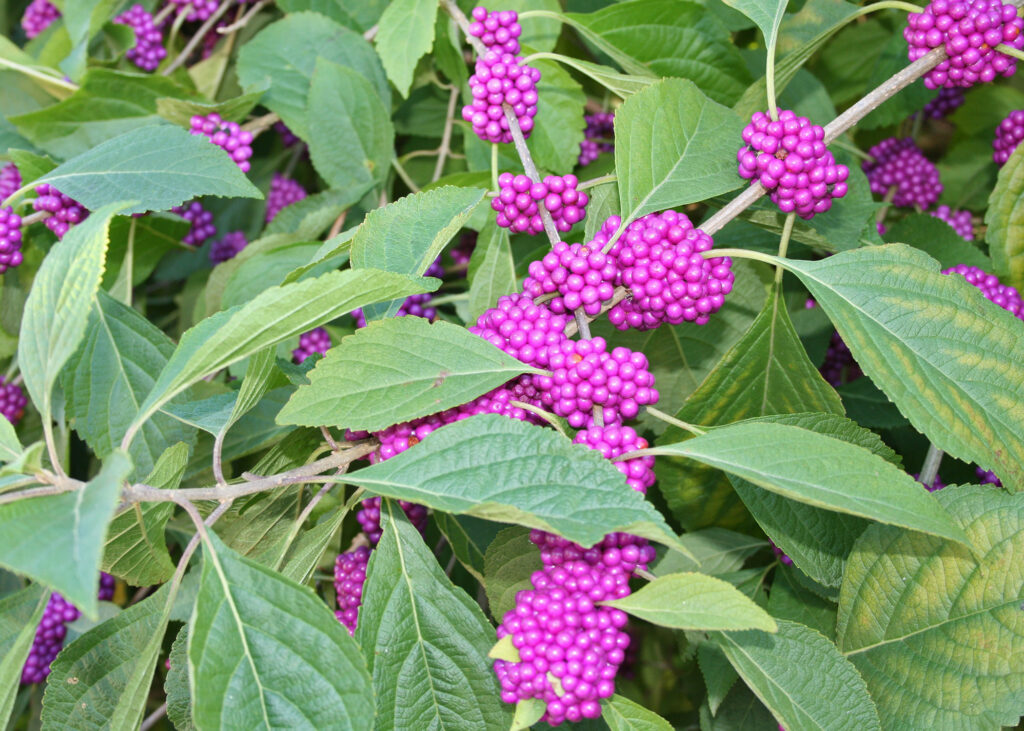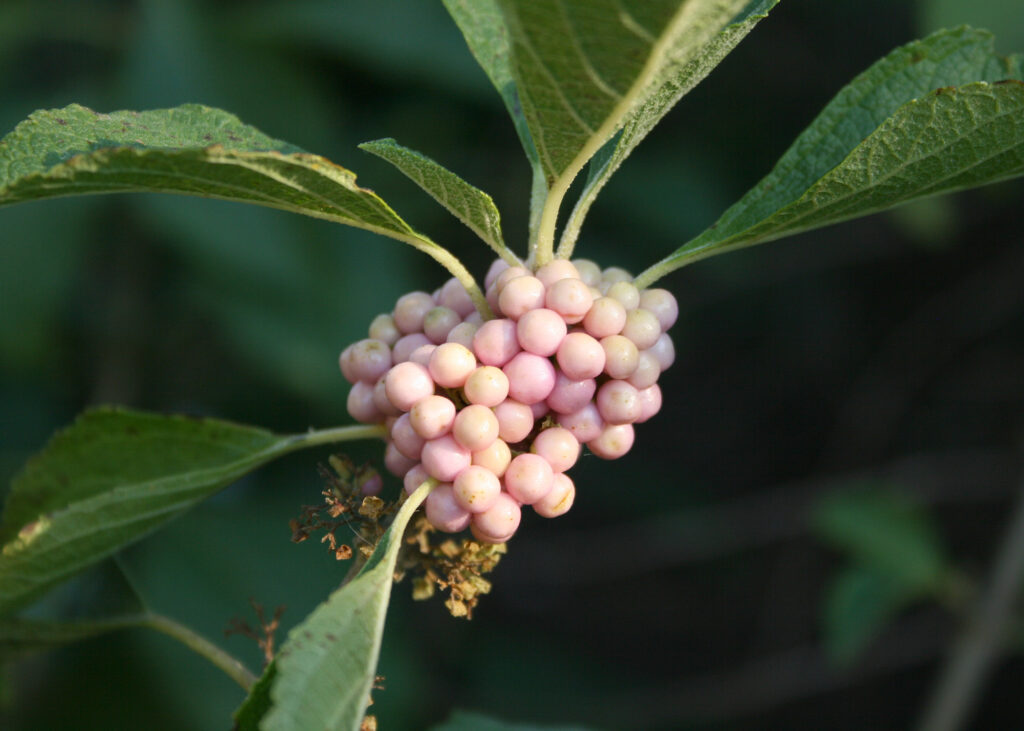
BEAUTYBERRY -- The American beautyberry is a native plant with three seasons of interest. Small flowers appear with the leaves in the spring, summer foliage is a rich green, and fall brings clusters of berries. (Photo by MSU Extension Service/Gary Bachman)

Are you interested in having native plants in your landscape?
More gardeners than ever are interested in having native plants in their landscapes. One native plant you might like to include in your landscape is the American beautyberry. Throughout Mississippi, the American beautyberry (Callicarpa americana) is bursting with clusters of bright purple berries.
American beautyberry is commonly found on the edges of woodlands across the state. It is widely found east of the Mississippi in the mid-Atlantic and Gulf Coast regions of North America. The berries are enjoyed by more than 40 species of songbird, including the American robin, mockingbirds, woodpeckers, and finches.
Despite its native status, American beautyberry is at home in a more formal landscape. Beautyberry comes in different maturity sizes and berry arrangements, but all are referred to as beautyberry in garden centers and nurseries.
Beautyberry is a great native deciduous plant that has three seasons of interest. Small, pink flowers appear in the leaf axils of paired leaves in the spring. Unfortunately, these flowers are inconspicuous but play an important role for later in the season. The summer foliage is a rich green that provides a good background for summer-blooming perennials and shrubs.
In the fall, beautyberry joins Mother Nature’s color chorus as its leaves transform into a deep, rich purple. However, the berries are the real fall show. Bright, shiny, purple berries are arranged in clusters at the leaf nodes all along the arching stems. The purple berries appear to have a metallic quality when sunlight reflects off them. Quite often the berries persist well into winter.
If this isn’t your color, you will be happy to learn you are not limited only to purple berries. Alba is a white-berried selection of American beautyberry whose groups of shiny, white berries stand out in shady nooks in the garden and landscape. The berries of Welches Pink have a lustrous, pink-blush sheen.
If you like variegated plants, try the variegated beautyberry called Duet. The foliage is green with variable yellow margins, and it produces white berries. It is the only stable variegated beautyberry in the nursery trade. Check local nurseries for availability.
American beautyberry grows up to 4 feet tall and wide. In north Mississippi, this plant may die back to the ground in severe winters. It is a good practice to prune the plant back in early spring to about 6 inches. This practice creates a fuller and more compact plant when new growth appears. You can propagate this shrub from seed or by taking softwood stem cuttings.
If growing from seed, soak the seeds in clean, cool water for 24 hours. If you want to start seeds indoors, sow 1/16-inch deep in small pots or seedling trays filled with seed-starter potting mix. Place trays or pots in a warm, sunny area. Keep the soil lightly moist via a spray-bottle mister until the seedlings are transplant size, about three months after sowing.
You can propagate beautyberry from softwood cuttings in spring. Softwood is a stem that is not brand new nor old and woody. Cut four- to six-inch stems from a healthy plant. Fill small pots with an all-purpose soil mix and insert and remove a pencil to create a hole for the cutting. Remove the lower leaves from your cutting, dip the cleanly cut end into rooting hormone and place in the hole. Create a mini greenhouse by placing a plastic dome or clear plastic bag over the pot or pots. Put it in bright, indirect light.
Beautyberry has a loose and open habit. One plant can be attractive, but a grouping of two or three creates a full cluster. The plants cross-pollinate to ensure the fullest fruit production. Beautyberry tolerates dry soil conditions and part shade, but the healthiest plants and best fruit production happen in full sun. Be sure to maintain consistent soil moisture for the best performance.
Beautyberry works well tucked in behind other fall-blooming plants. They add a soft background during the summer months and dazzle in the fall with their metallic-colored berries.
Be warned that these beautyberry selections may not be available at all local nurseries, so do your research early and ask for them where you buy plants.







I made some jam last year with this type of berry. It was “berry good”!!